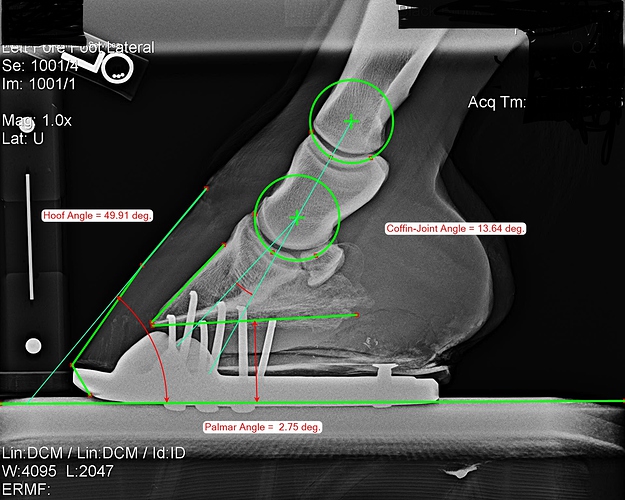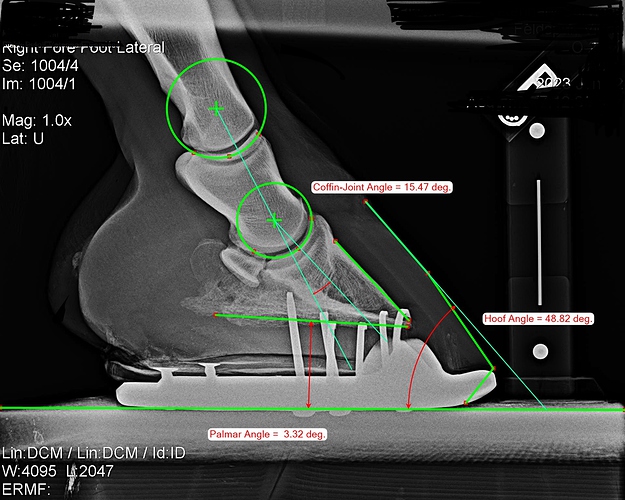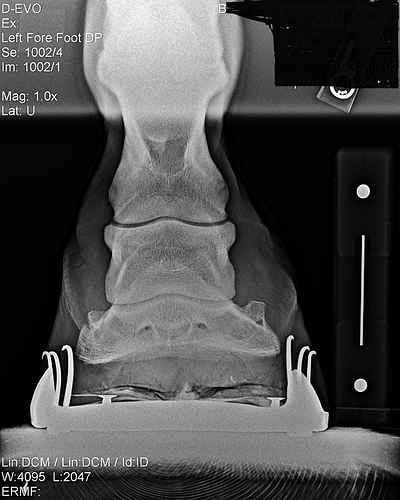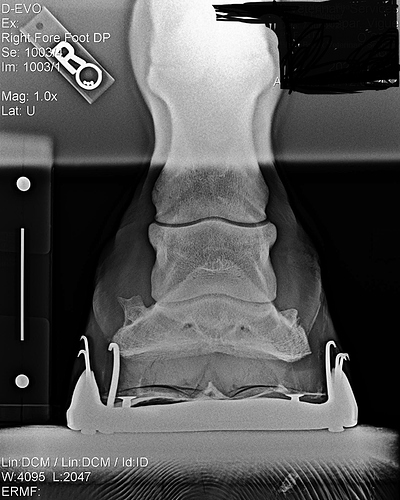These are radiographs of an 18 year old Morgan cross that has had some soundness issues in his front end, beginning about a month-month and a half ago. Any opinions on them?
Background:
- history of some “wonkyness” in hind end (has always tended to be very slightly short RH as long as I’ve had him), I would not classify as “lame” ever. You would only notice if you stare too hard. Sometimes a bit worse, improved significantly after injecting stifles last year
- no history of front end stuff previously
- had sports med vet out to do stifles again this year. She watched him go on the lunge line and saw a little LF but quite mild (this was on our VERY forgiving footing). She asked to see him on hard ground- went around and was significantly lame LF in both directions (head bobbing significantly). felt legs/digital pulse/feet- nothing significant.
- Plan: Drew blood for Cushings (to see if we can inject with steroid- it’s neg), put him on Equioxx, keep an eye on him and change activity level accordingly. Inject stifles and coffins next time she was out. She mentioned in her notes that he hadn’t had any foot radiographs so I said to myself “well, why not”
- had general vet take front foot radiographs when they were out to check general hoof balance and see if anything jumped out. Consensus was “looks good”, and also “I’m concerned about the rings on your horses hoof wall” (externally). This is a somewhat newer development, he’s always had some rings (he’s been through a lot of changes, but no major ones other than seasonal the past year), but rings have become a lot more pronounced/there are more of them. He goes out on night turnout on some grass (not a huge paddock though), and I started putting a grazing muzzle on him because it was coming in quite lush and he was gorging himself (no other paddock options) This was pre-lameness. There currently doesn’t seem to be any relation but we’re playing it safe with grazing muzzle and low sugar diet. BCS is good, no crest. Just the rings.
*Please don’t tell me to talk to my vet. I am working with vets. But was only able to get a one sentence summary from the general practice vet who took them, and won’t be able to discuss with sports med vet for a few more weeks. And I like to learn things, and learn what questions to ask, etc etc, and expect others do too!




